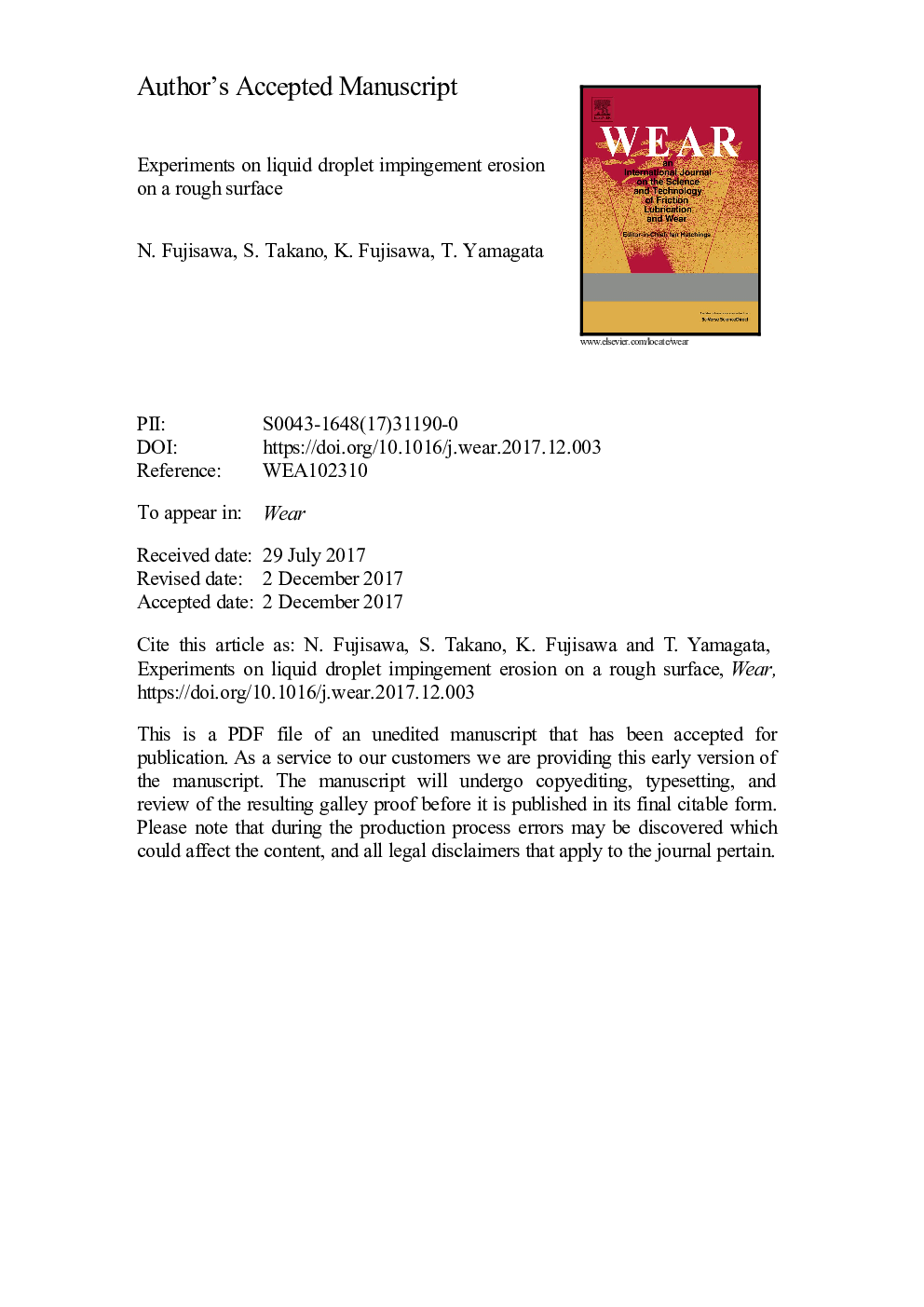| Article ID | Journal | Published Year | Pages | File Type |
|---|---|---|---|---|
| 7004000 | Wear | 2018 | 17 Pages |
Abstract
Liquid droplet impingement (LDI) erosion on a rough surface was studied experimentally in the initial stage of erosion using spray-jet impingement on various levels of sandpaper roughness and single groove roughness. The experimental results using an aluminum specimen indicated that the incubation period decreased and the erosion rate increased with increasing the relative roughness, defined as the ratio of roughness height to droplet diameter, in a range of small relative roughness. The growth of the erosion rate in a large relative roughness is almost constant for the sandpaper roughness with increasing the relative roughness, while the erosion rate for the groove roughness decreased at large relative roughness. Therefore, the erosion rate of the groove roughness indicated a peak at small relative roughness. This might be due to the influence of smooth surface surrounding the single groove roughness. A scanning electron microscope (SEM) observation for the small relative roughness of groove showed that erosion was started on the sidewall of the grooves and was followed by the penetration of erosion perpendicular to the groove. The erosion initiation points shifted from the sidewall to the bottom of the groove with increasing the relative roughness, which might be due to the effective impact angle variation across the groove.
Keywords
Related Topics
Physical Sciences and Engineering
Chemical Engineering
Colloid and Surface Chemistry
Authors
N. Fujisawa, S. Takano, K. Fujisawa, T. Yamagata,
